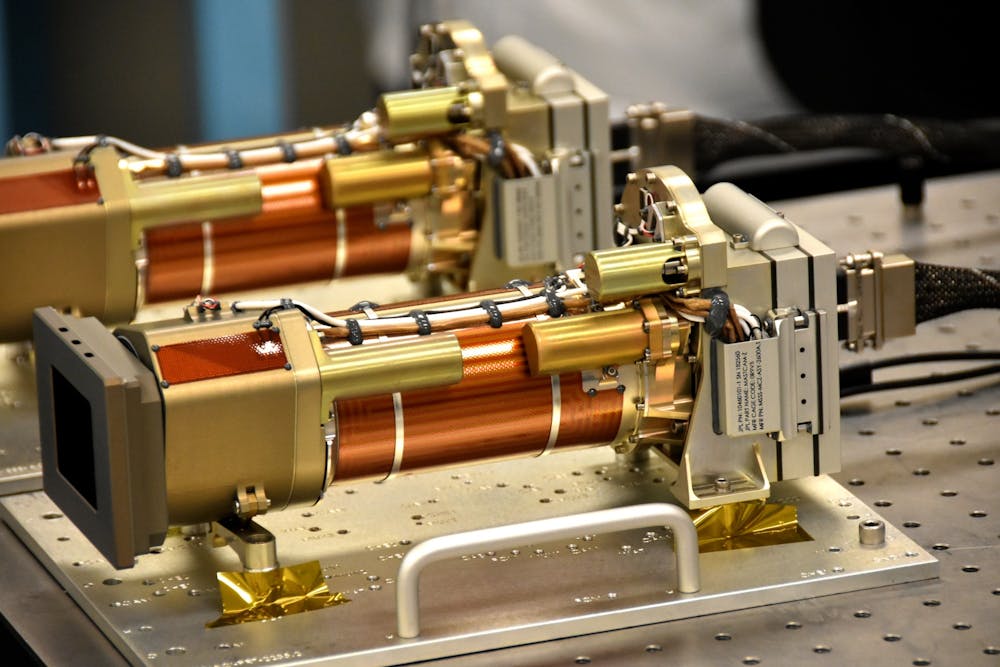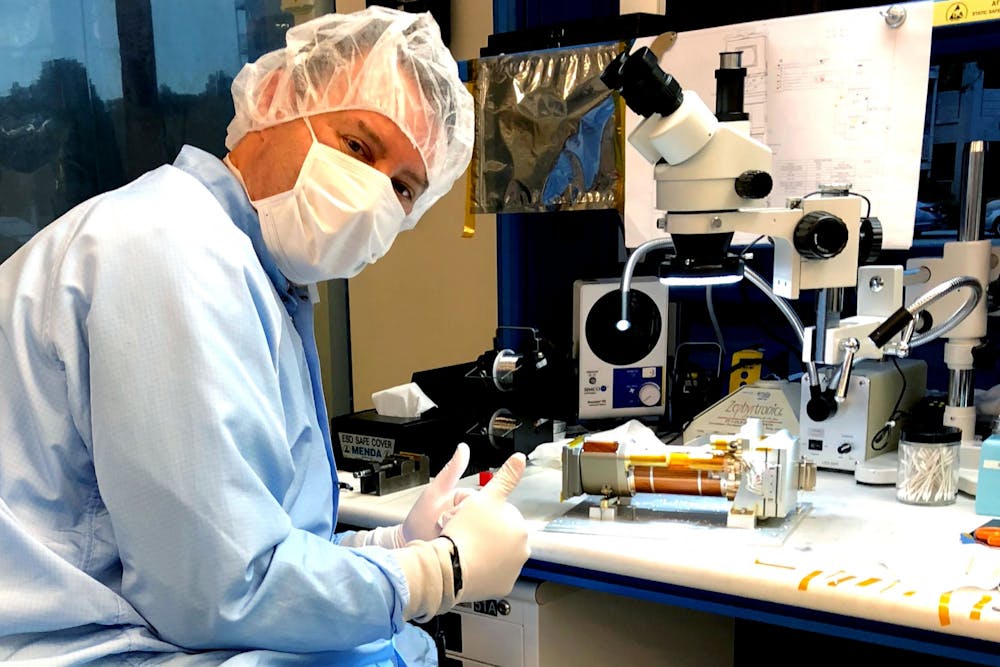Thursday morning the Mars 2020 Perseverance rover started its journey to Jezero Crater with the ASU-developed Mastcam-Z at its head.
Perseverance’s job is to explore the region that scientists believe once held a lake in order to collect samples of minerals that hold evidence of microbial life.
Mastcam-Z, a two-camera system, will bring unprecedented imaging technology to Mars. Mastcam-Z's zoom capability gives researchers a closer look at the terrain without moving the rover, which Mastcam-Z Downlink lead Kristen Paris said will make sample collection faster and easier.
“The new capability will allow us to get a closer look at the rocks without actually having to drive up to them and then with those zoomed-in images we can figure out, ‘oh hey, these are really cool let's drive to that,’ or ‘hey, they look really similar to the nearby rocks, let's study these first and see what we can get,’” Paris said.
Paris said Mastcam-Z will also allow researchers to see fine details on closer objects, plan paths across terrain and assist the “cache cam,” which is is the part of the rover that will collect and hold the samples, located within the sample cacher with another angle from which researchers can supervise the collection process.
Mastcam-Z and its unique capabilities are essential to Perseverance’s mission to seek out signs of ancient life. Meenakshi Wadhwa, director of the School of Earth and Space Exploration, explained during a webinar before the launch that samples have never before been collected from the planet.
“I'm super excited about Perseverance because it really represents the first step in bringing back more samples to Earth for the very first time,” Wadhwa said.
Perseverance has the capability to core into the surface of Mars and collect rock samples Mastcam-Z identifies.
Principal investigator for the project Jim Bell, also a professor for the School of Earth and Space Exploration, said in the webinar that this initial voyage could lead to sample retrieval missions within a decade.
In addition to searching for ancient signs of life, Perseverance will also help researchers explore options for future human exploration of Mars by testing autopilot functions and collecting data for future landing sites.
The team said this technology will bring a lot of new information in the form of data, images and videos for scientists working across disciplines to use. Wadhwa said this information will usher in many new opportunities, especially for student researchers.
“That's what makes some of the missions so powerful and wonderful is that you're training the next generation of scientists and explorers,” Wadhwa said.
In addition to Mastcam-Z, the rover will also carry a four-pound helicopter named Ingenuity equipped with a cell phone camera that will use wireless communication with the rover and collect images from above.
Perseverance is scheduled to land on Feb. 18, 2021. Until then, the Mastcam-Z team will be running operational tests as well as analyzing data and images to find an exact landing spot for Perseverance.
Perseverance has been designed to operate for one Mars year, which is a little under two Earth years, but some rovers have historically been known to remain active much longer than their expected duration, and the team hopes Perseverance will do the same.
Paris said she is looking forward to seeing whatever Mastcam-Z finds, but for now that remains unclear. Paris said although they have some information about the geology and mineralogy of the area, this expedition will finally confirm — or contradict — their ideas.
“We have a theory that Jezero was an ancient lake and it was breached by this delta by a river that was flowing into it and so when we get there we will be able to tell if our hypothesis is correct,” Paris said. “For me personally, I think that's the fun stuff.”
Bell said this project is paving the way for humans to one day experience Mars in a tactile way and possibly in person.
“I want to see Mars with my own eyes, not that I don't trust the calibration,” Bell said. “Who knows, maybe Elon Musk can give me a ride, but just to go from experiencing virtually to experiencing real, that's what this whole decade-long Mars sample return mission offers.”
Reach the reporter at gmlieber@asu.edu or follow @G_Mira_ on Twitter.
Like The State Press on Facebook and follow @statepress on Twitter.





